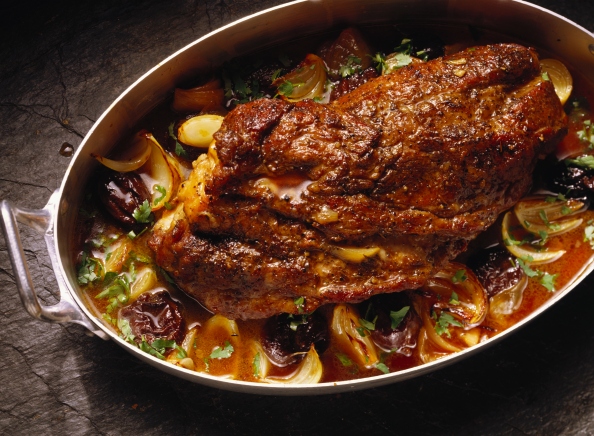
If you love cooking, a brisket should be on your list of things to try out. While it may seem like a large task to cook a large cut of meat such as a brisket, the truth is that it is simple if you only follow a few basic guidelines. After reading this guide, you will be able to get a pot of a large, beefy and delicious braised brisket that will leave everyone showering you with praises.
The Beef
 A brisket is a type of beef breast that is generally fairly tough and makes almost 60% of a cow’s weight. You can break down the tough fibers and make it tender by braising it low and slow. Most briskets are trimmed, though it’s good to have a bit of the the deckle (fat) which helps the meat to self-baste in the oven.
A brisket is a type of beef breast that is generally fairly tough and makes almost 60% of a cow’s weight. You can break down the tough fibers and make it tender by braising it low and slow. Most briskets are trimmed, though it’s good to have a bit of the the deckle (fat) which helps the meat to self-baste in the oven.
The Liquid
You can use simple seasoning (salt and pepper) because the brisket absorbs most of its flavor from the braising liquid. Ensure that your braising liquid is sweet and savory but also has enough tang to cut through the meat. A good braising liquid could be as simple as beef broth or even chicken broth, beer, or even just seasoned water. For a really flavorful braising sauce, we like to use red wine that has been slightly watered down.
The Vegetables
Cook the onions slowly to build a sweet foundation for the braising liquid. Use the tomatoes and tomato paste to add a sweetness to the brisket. Moisten the brisket using the braising liquid and leave some of the tomatoes and onions at the top to be caramelized to a delicious finish. You can add carrots (cooked until tender), parsnips or potatoes to the dish.
The Duration
The brisket becomes better and better depending on how long you’ll let it sit before cutting and slicing the meat. For the best brisket-eating experience, let it cool completely while it is still in the braising liquid. After it has cooled, remove the solidified fat that remained at the top. You can then take the brisket out of sauce, slice it against the grain to your preferred thickness, and then reheat it in the oven until it is bubbly and warm. With this done, you will be ready to serve a delicious meal.
Follow along with us for all of the most delicious stories online.

